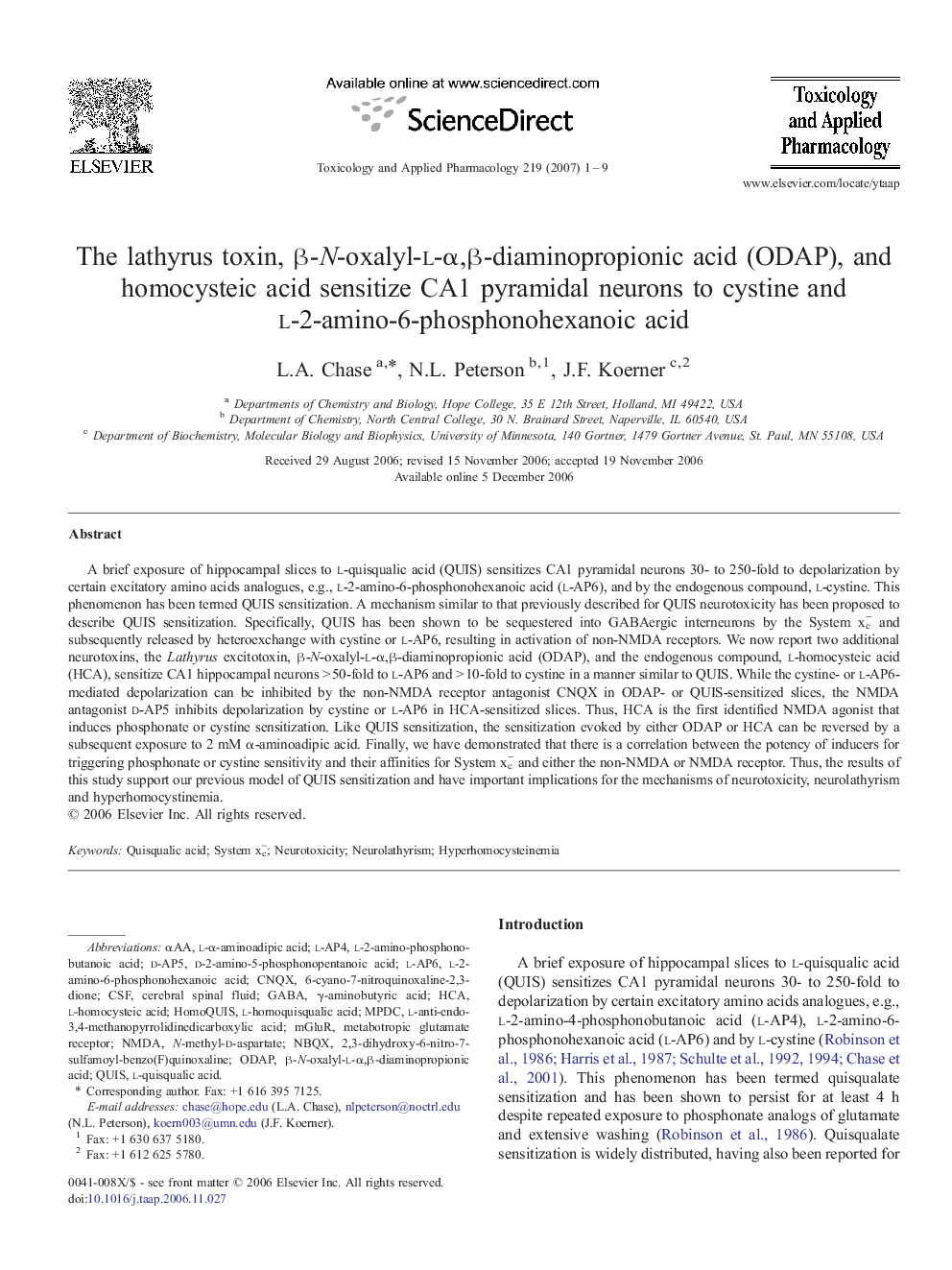| کد مقاله | کد نشریه | سال انتشار | مقاله انگلیسی | نسخه تمام متن |
|---|---|---|---|---|
| 2571826 | 1128653 | 2007 | 9 صفحه PDF | دانلود رایگان |

A brief exposure of hippocampal slices to l-quisqualic acid (QUIS) sensitizes CA1 pyramidal neurons 30- to 250-fold to depolarization by certain excitatory amino acids analogues, e.g., l-2-amino-6-phosphonohexanoic acid (l-AP6), and by the endogenous compound, l-cystine. This phenomenon has been termed QUIS sensitization. A mechanism similar to that previously described for QUIS neurotoxicity has been proposed to describe QUIS sensitization. Specifically, QUIS has been shown to be sequestered into GABAergic interneurons by the System xc− and subsequently released by heteroexchange with cystine or l-AP6, resulting in activation of non-NMDA receptors. We now report two additional neurotoxins, the Lathyrus excitotoxin, β-N-oxalyl-l-α,β-diaminopropionic acid (ODAP), and the endogenous compound, l-homocysteic acid (HCA), sensitize CA1 hippocampal neurons > 50-fold to l-AP6 and > 10-fold to cystine in a manner similar to QUIS. While the cystine- or l-AP6-mediated depolarization can be inhibited by the non-NMDA receptor antagonist CNQX in ODAP- or QUIS-sensitized slices, the NMDA antagonist d-AP5 inhibits depolarization by cystine or l-AP6 in HCA-sensitized slices. Thus, HCA is the first identified NMDA agonist that induces phosphonate or cystine sensitization. Like QUIS sensitization, the sensitization evoked by either ODAP or HCA can be reversed by a subsequent exposure to 2 mM α-aminoadipic acid. Finally, we have demonstrated that there is a correlation between the potency of inducers for triggering phosphonate or cystine sensitivity and their affinities for System xc− and either the non-NMDA or NMDA receptor. Thus, the results of this study support our previous model of QUIS sensitization and have important implications for the mechanisms of neurotoxicity, neurolathyrism and hyperhomocystinemia.
Journal: Toxicology and Applied Pharmacology - Volume 219, Issue 1, 15 February 2007, Pages 1–9